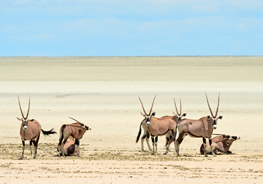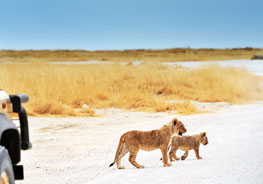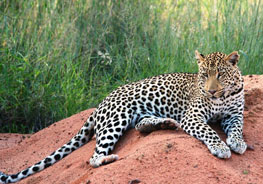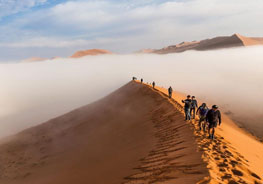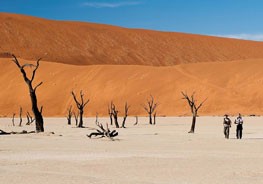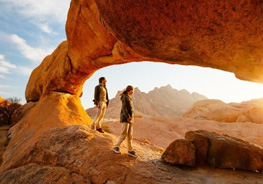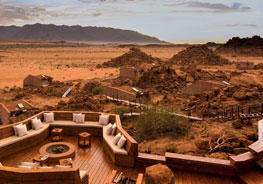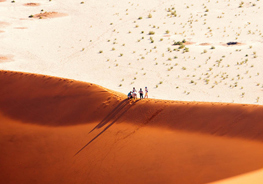Call Us
8:00am - 17:00PM
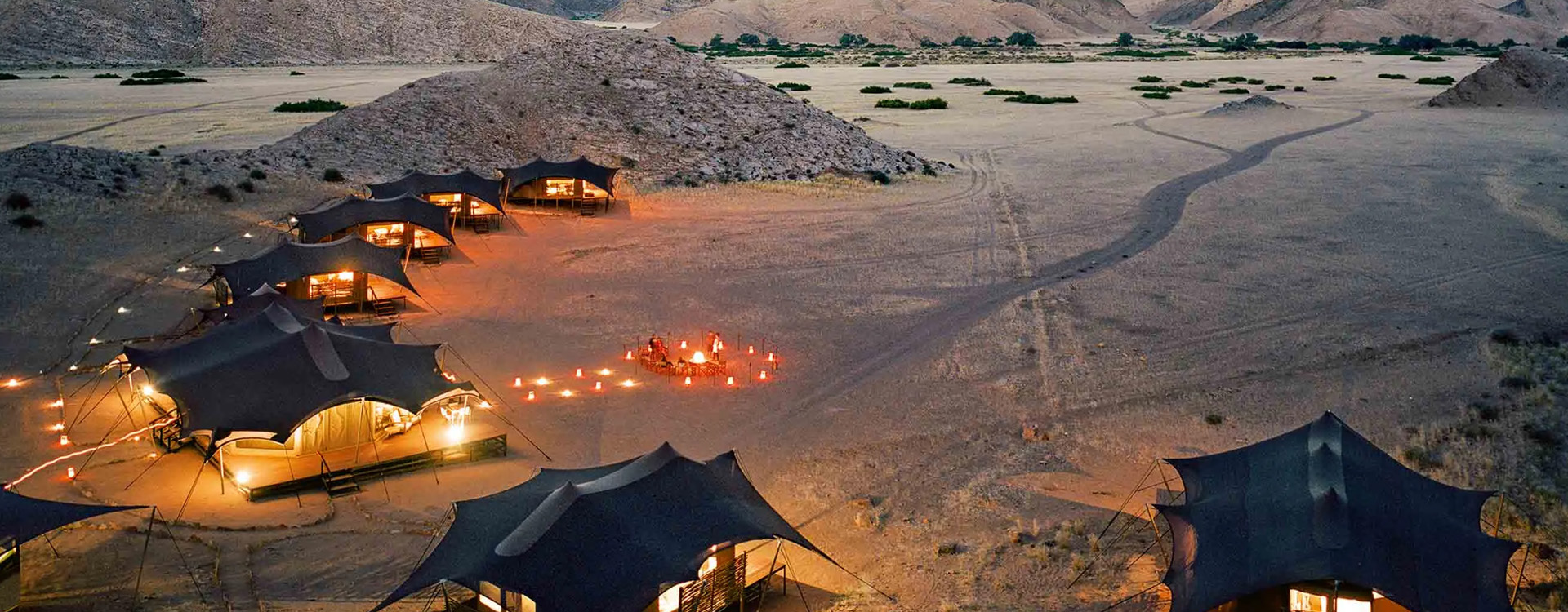
Best Time To Visit Namibia
Namibia
Best Time To Visit
The Best Time To Visit Namibia is during its dry season, from May to October. Enjoy clear skies, pleasant temperatures, and excellent wildlife viewing opportunities. Endless horizons, scenic landscapes, and unspoiled, wilderness, there are no better words than these to explain Namibia. And, having all these Namibia offers an excellent wildlife-viewing experience.
And, if you’re looking for a Namibia Safari, you should know What Is The Best Time To Visit Namibia. The following content will let you know everything….
Climate And Weather Patterns In Namibia
Months By Month Guide For Namibia Safaris
High Season Vs Low Season In Namibia
The Best Time To Visit Namibia For Wildlife Watching
Best Time To Visit Namibia For Outdoor Activities
Best Time To Visit Namibia According To Destination
Best Time To Visit Namibia According To Cultural Experiences
Best Time To Visit For Budget Travellers
The Overall Best Time To Visit Namibia
Things To Consider Before Planning A Namibia Tour
Final Thoughts
Climate And Weather Patterns In Namibia
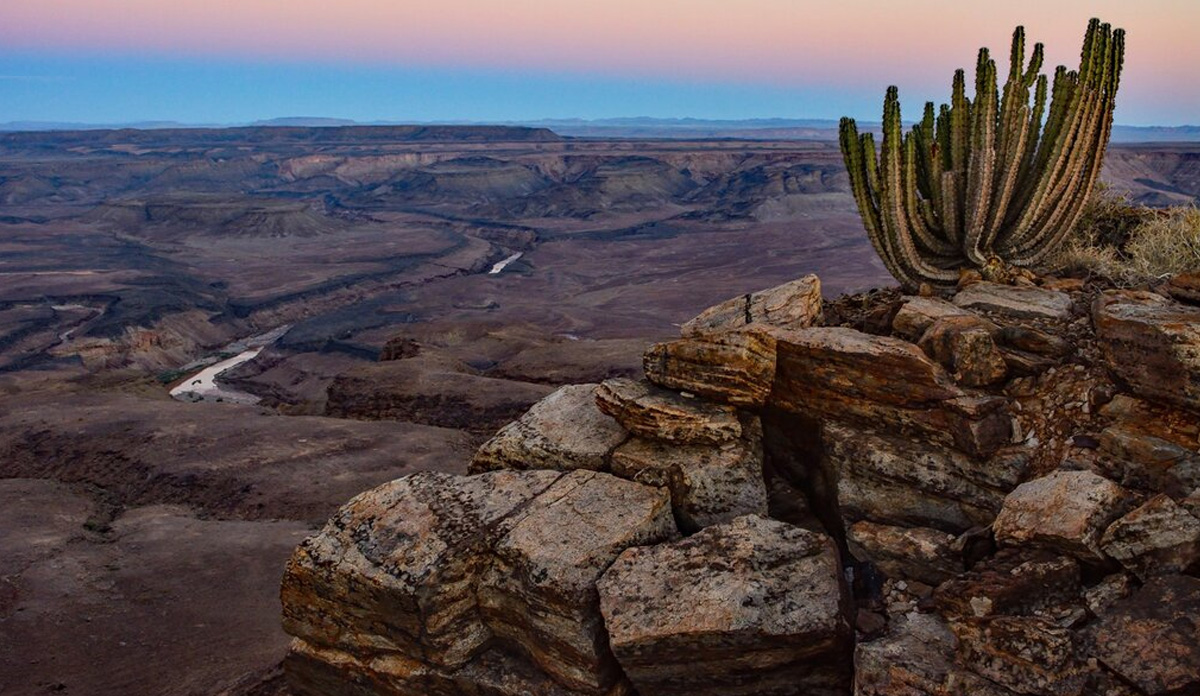
Namibia is a country located in southern Africa, known for its diverse landscapes, including the Namib Desert, Etosha National Park, and the Fish River Canyon. Understanding the climate and weather patterns in Namibia is crucial for anyone planning a trip to the country.
Namibia's Climate
Namibia has a desert climate, with hot and dry conditions throughout the year. The country receives very little rainfall, with most of it falling during the summer months (November to March). The coastal regions of Namibia are slightly cooler due to the cold Benguela Current, which brings in dense fog and mist.
Seasons in Namibia
Namibia has two distinct seasons: a hot and dry season and a cool and dry season. The hot and dry season runs from September to April, while the cool and dry season runs from May to August.
Hot and Dry Season (September to April)
This season is characterized by hot temperatures, clear skies, and very little rainfall. Temperatures can reach up to 40°C (104°F) during the day, and nights are usually warm. The coastal regions of Namibia are slightly cooler, with temperatures averaging around 20°C (68°F).
Note - During this season, visitors can enjoy activities such as hiking, camping, and wildlife safaris.
Cool and Dry Season (May to August)
This season is characterized by cooler temperatures and clear skies. The days are warm, but the nights can be quite chilly, with temperatures dropping to below freezing in some areas.
This season is an excellent time to visit Namibia for outdoor activities such as hiking and camping. It is also a great time for Wildlife Safaris In Namibia as the animals congregate around water sources.
Rainfall in Namibia
Namibia receives very little rainfall throughout the year, with most of it falling during the summer months (November to March). The central regions of Namibia receive the least amount of rainfall, while the northern regions receive the most.
The coastal regions of Namibia receive very little rainfall due to the cold Benguela Current, which causes a low-pressure zone and dense fog and mist.
Weathers pattern in Namibia
The weather patterns in Namibia vary depending on the season and the region of the country. Here's a breakdown of the month-wise weather patterns in Namibia:
March to May:
- These months fall within Namibia's autumn season.
- The temperatures begin to cool down, and the weather is generally pleasant.
- There might be occasional rainfall in the north-central regions of the country.
June to August:
- These months fall within Namibia's winter season.
- The weather is generally dry and sunny, with little to no rainfall.
- The temperatures can be very cold, especially in the morning and at night.
September to November:
- These months fall within Namibia's spring season.
- The temperatures begin to warm up, and the weather is generally pleasant.
- There might be occasional rainfall in the north-central regions of the country.
December to February:
- These months fall within Namibia's summer season.
- The weather is generally hot and dry, with occasional thunderstorms and rainfall in the central and northern regions of the country.
- The temperatures can be very high, especially in the afternoons.
Overall, Namibia’s Climate is mostly dry and arid, with temperatures varying widely depending on the season and the region of the country. It's important to pack appropriately for the weather conditions when planning a Trip To Namibia.
Months by Month Guide for Namibia Safaris
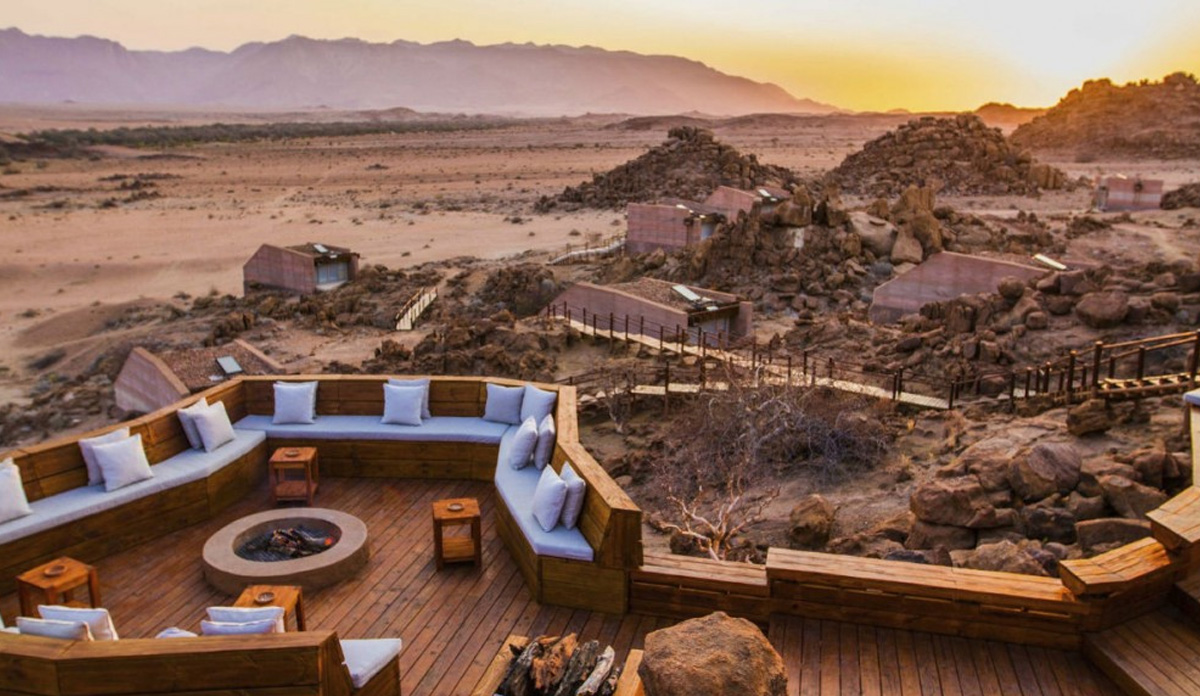
Namibia is a beautiful country with a diverse range of attractions to explore, from the towering sand dunes of Sossusvlei to the wildlife-rich Etosha National Park. While Namibia can be visited year-round, the best time to visit depends on your interests and priorities. Here is a month-by-month guide for Namibia Tours:
January
This month is the height of summer in Namibia, with hot and dry conditions prevailing. It is the best time to visit the northern parts of the country, including Etosha National Park, as the wildlife congregates around waterholes.
This is also a good time to visit the Skeleton Coast and the Caprivi Strip, which are cooler and greener than other parts of the country.
February
February is still hot and dry in most parts of Namibia Safari, but the rainy season starts in the northeast, including the Caprivi Strip. This can make road travel difficult, so it is best to stick to the southern and western parts of the country.
March
This is the start of the rainy season in most of Namibia, which brings cooler temperatures and greener landscapes. The central regions, including the Namib Desert, can be particularly beautiful at this time. The wildlife in Etosha National Park is still abundant, although the vegetation is starting to grow and can make sightings more challenging.
April
This is the Best Time of The Year to Visit Namibia, as the weather is mild and the landscapes are at their greenest. It is a good time to explore the Namib Desert, as the temperatures are cooler and more comfortable for hiking. The Namibia Wildlife in Etosha is still plentiful, although the vegetation can make sightings more difficult.
May
The rainy season is coming to an end, but some areas of the country, such as the Caprivi Strip, may still be experiencing rainfall. This is a Good Time To Visit The Skeleton Coast, as the temperatures are cooler and the fog can create a mystical atmosphere.
June
This is the start of winter in Namibia, with cool and dry conditions prevailing. It is a good time to visit the central and southern parts of the country, including Sossusvlei and the Fish River Canyon. The wildlife in Etosha is still abundant, although the cooler temperatures can make sightings more challenging.
July
July is a popular time to plan a Namibia Tour, as the weather is dry and cool, and the wildlife in Etosha is still plentiful. It is a good time to visit the Skeleton Coast, as the fog is less frequent, and the landscapes are stark and beautiful.
August
This is the peak of the dry season in Namibia, with cool and sunny weather prevailing. It is the Best Time To Visit The Namib Desert, as the temperatures are comfortable for hiking and exploring. The wildlife in Etosha is still abundant, although the cooler temperatures can make sightings more difficult.
September
This is the start of the hot season in Namibia, with temperatures starting to rise again. It is a Best Time Of Year To Go To Namibia, for those who want to explore the Caprivi Strip, as the rainfall has brought new growth and wildlife to the region.
October & November
This is the height of the hot season in Namibia, with temperatures reaching their peak. It is a good time to visit the central and southern parts of the country, including Sossusvlei and the Fish River Canyon. The wildlife in Etosha is still abundant, although the vegetation is starting to grow, making sightings more challenging.
December
The hot season continues in December, with some areas of the country, including the Caprivi Strip, experiencing rainfall.
Here is a table that summarises all the above data on the Best Time to Visit Namibia according to the destination.
| Month | Weather | Best Areas to Visit |
|---|---|---|
| January | Hot and dry | Northern regions, including Etosha National Park |
| February | Hot and dry | Southern and western regions |
| March | Cooler and greener | Central regions, including the Namib Desert |
| April | Mild and green | Namib Desert |
| May | Cool and foggy | Skeleton Coast |
| June | Cool and dry | Central and southern regions, including Sossusvlei and Fish River Canyon |
| July | Dry and cool | Etosha National Park and Skeleton Coast |
| August | Dry and cool | Namib Desert |
| September | Hot and green | Caprivi Strip |
| October & November | Hot and dry | Central and southern regions, including Sossusvlei and Fish River Canyon |
| December | Hot and rainy | Caprivi Strip |
High Season vs Low Season in Namibia
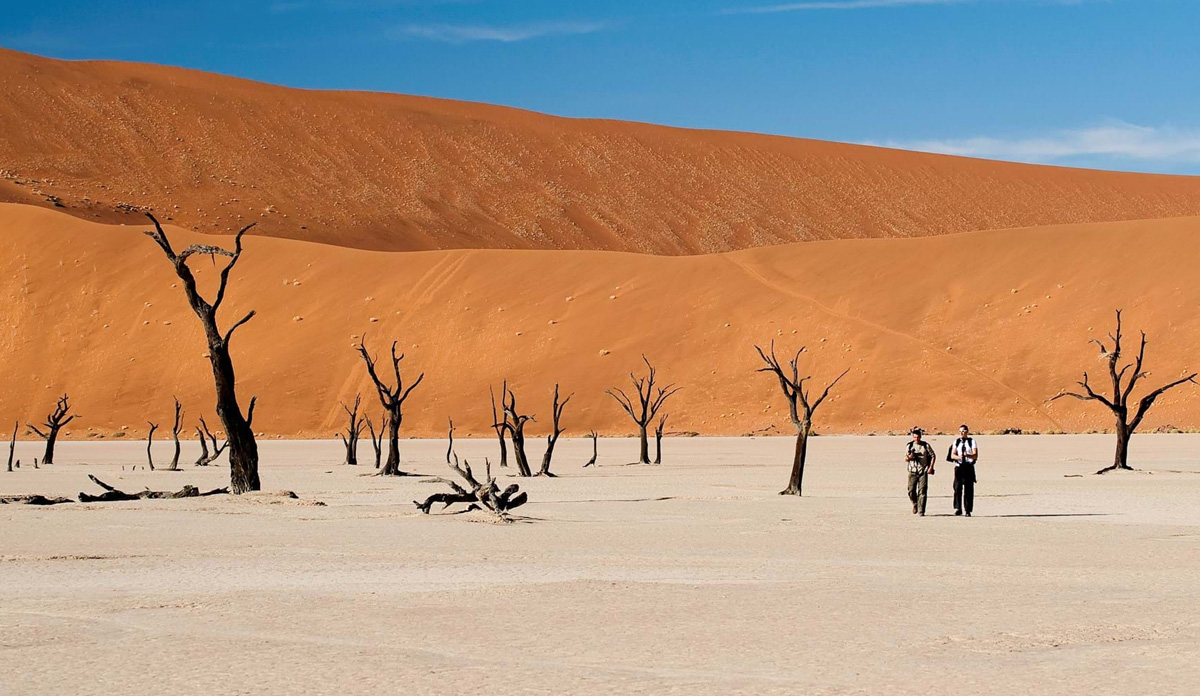
Both High season and low season has its advantages and dis-advantage. While in High season, you can have the best game-viewing experience in Namibia Safaris, the low season is for those, who are planning safari in budget.
Here is a tabular comparison of high season vs low season:
|
Categories/ Season |
High |
Low |
|---|---|---|
|
Months |
June to September |
November to May |
|
Weather |
Mild days and cool nights; very little rainfall |
Hot days and warm nights; occasional rain and storms |
|
Landscape |
Dry, brown vegetation; water sources like waterholes attract wildlife |
Green vegetation; animals more dispersed |
|
Numbers of Tourists |
High |
Low |
|
Accommodation |
Higher rates and limited availability |
Lower Rates and more availability |
|
Activities |
Best Time for wildlife watching and outdoor activities |
Good for Bird watching and exploring coastal areas |
The Best Time To Visit Namibia For Wildlife Watching
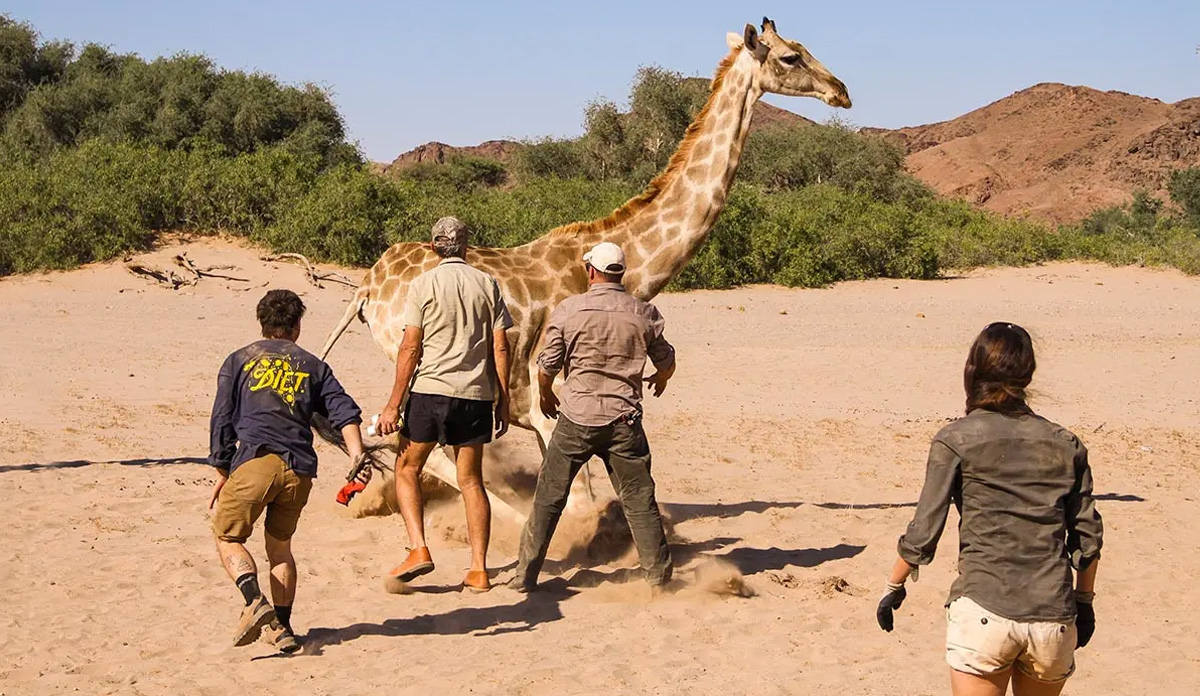
The Best Time to Visit Namibia for wildlife-watching largely depends on what specific wildlife you want to see and where you want to see them. Generally, the dry season from June to October is the Best Time For Namibia Wildlife viewing as animals tend to congregate around water sources during this time.
If you are interested in seeing large mammals such as elephants, lions, and rhinos, the Best Time To Visit Namibia during the months of June to October. During this time, the vegetation is sparse, making it easier to spot animals in the national parks and reserves.
If you want to see migratory birds, the best time to visit is from November to April when the birdlife is most abundant. The wetter months of December to March are particularly good for birdwatching.
For those who want to see desert-adapted animals such as the desert elephant and desert lion, the best time to visit is from May to September when the temperatures are cooler and these animals are more active.
Best Time To Visit Namibia For Outdoor Activities
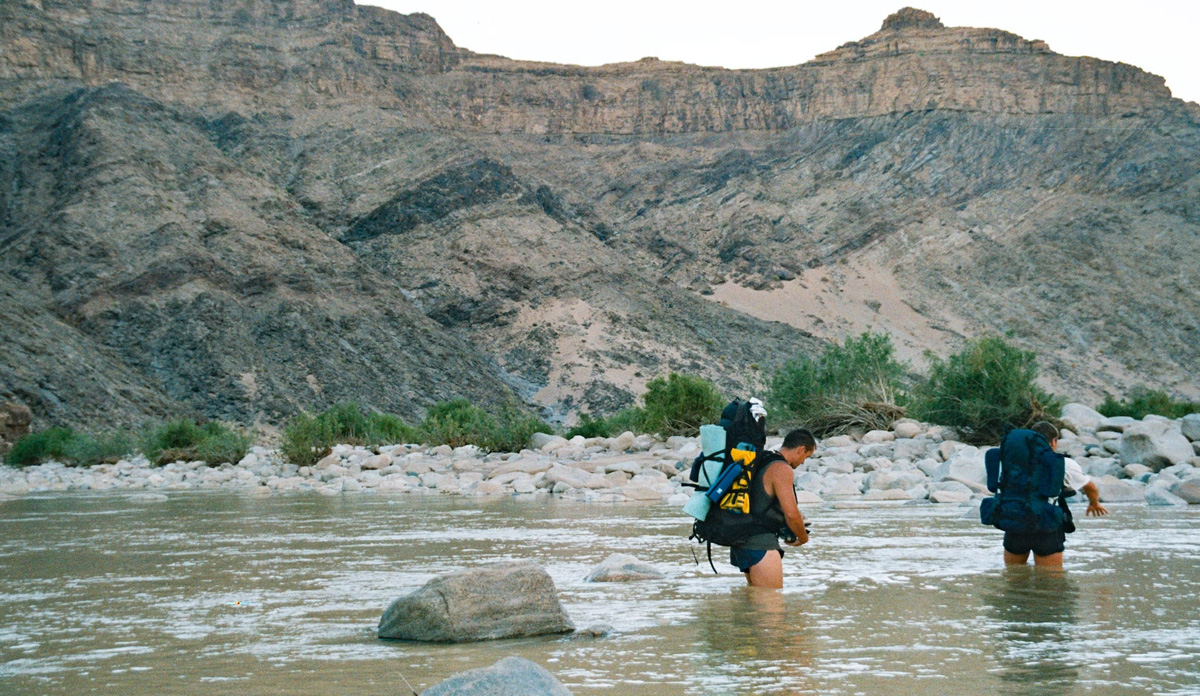
The Best Time Of Year To Visit Namibia for outdoor activities depends on the specific activities you plan to do. Namibia's climate is generally arid and dry with hot days and cool nights, but there are variations depending on the region and time of year.
Hiking
If you plan to visit Namibia for hiking, the cooler months from May to September are the best time to go as temperatures are more comfortable for outdoor activities during this time. The Fish River Canyon hike is only open during the cooler months as temperatures can become dangerously high during the hotter months.
Sandboarding & Sky-Diving
If you plan for Things To Do In Namibia such as sandboarding, quad biking, or skydiving, the best time to go is during the warmer months of September to April when temperatures are higher and days are longer.
Stargazing
Best Month To Visit Namibia for stargazing is the dry season, May to October. Namibia has some of the clearest and darkest skies in the world, making it a great place for stargazing
Photography
If you plan to visit Namibia for photography, the best time to go is during the dry season from June to October when the landscapes are at their most dramatic, and wildlife is easier to spot.
Overall, Namibia is a year-round destination for outdoor activities, and the best time to visit will depend on the Things To Do In Namibia you plan to do.
Best Time to Visit Namibia according to Destination
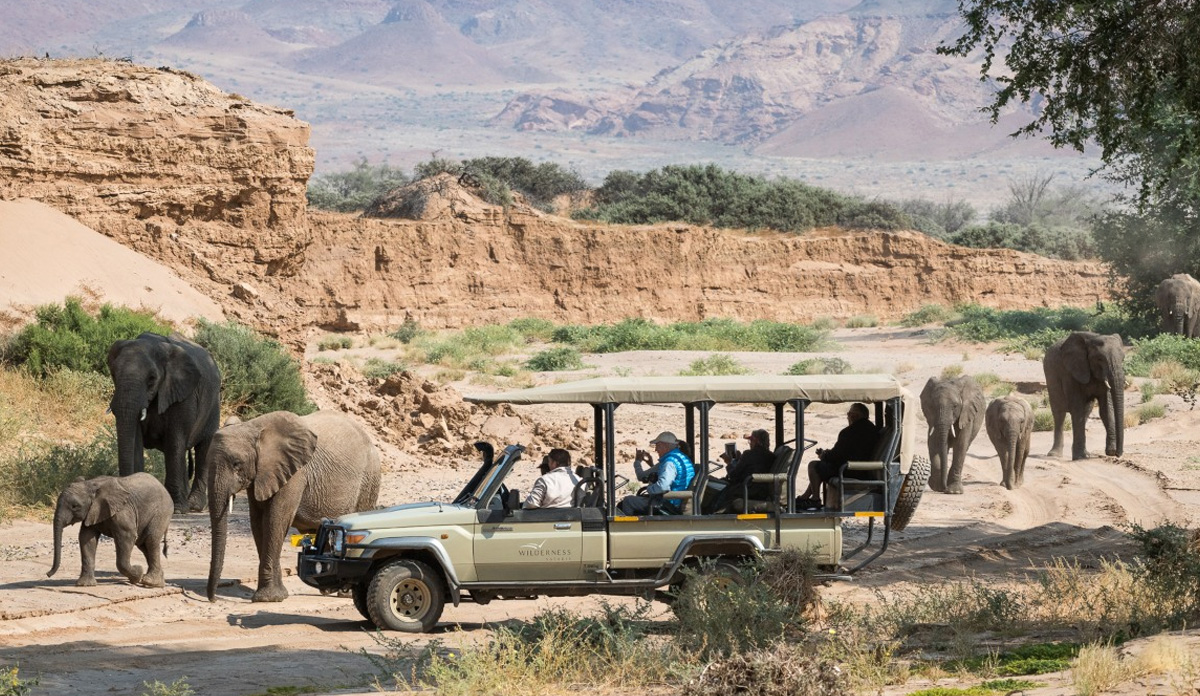
Namibia is a diverse country with a variety of destinations, each with its own unique climate, landscapes, and activities. Here are some of the best times to visit Namibia according to popular destinations:
Etosha National Park
The Best Time To Visit Etosha National Park is during the dry season from June to October. This is when animals congregate around water sources, making it easier to spot wildlife.
Sossusvlei And Namib-Naukluft National Park
The cooler months which runs from May to October is the best time to visit Sossusvlei and Namib-Naukluft National Park. This is when temperatures are more comfortable for outdoor activities, and the landscapes are at their most dramatic.
Fish River Canyon
The Best Time of the Year to Visit Namibia, Fish River Canyon is during the cooler months from May to September. This is when temperatures are more comfortable for hiking, and the canyon is open to hikers.
Swakopmund
September to April is the optimal time to visit Swakopmund. This is when temperatures are higher, and outdoor activities such as sandboarding, quad biking, and skydiving are more popular.
Damaraland
The best time to visit Damaraland is during the cooler months from May to September. This is when temperatures are more comfortable for outdoor activities, and desert-adapted wildlife such as elephants and lions are more active.
Caprivi Strip
The Best Time To Visit Caprivi Strip is during the dry season from June to October. This is when the floodwaters recede, making it easier to access the area, and wildlife is more easily visible.
Kaokoland
The best time to visit Kaokoland is during the dry season from May to October. This is when the roads are more accessible, and wildlife such as desert-adapted elephants and black rhinos are more active.
Skeleton Coast
The best time to visit Skeleton Coast is during the cooler months from May to September. This is when temperatures are more comfortable for outdoor activities, and the area is less foggy.
Kolmanskop
The best time to visit Kolmanskop is during the cooler months from May to September. This is when temperatures are more comfortable for exploring the abandoned diamond mining town, and photography conditions are ideal.
Waterberg Plateau National Park
The best time to visit Waterberg Plateau National Park is during the cooler months from May to September. This is when temperatures are more comfortable for hiking, and wildlife such as leopards, buffalos, and white rhinos are more active.
Lüderitz
The best time to visit Lüderitz is during the cooler months from May to September. This is when temperatures are more comfortable for exploring the colonial-era town, and outdoor activities such as kayaking and whale watching are popular.
Epupa Falls
The best time to visit Epupa Falls is during the dry season from June to October. This is when the falls are at their most impressive, and the area is more accessible for hiking and cultural experiences with the Himba people. Here is a table summarizing the best time to visit popular destinations in Namibia based on weather and wildlife viewing:
|
Destination |
Best time to visit |
|---|---|
|
Etosha National Park |
May to September |
|
Sossusvlei and Namib-Naukluft National Park |
March to May and September to November |
|
Skeleton Coast |
April to November |
|
Damaraland |
May to September |
|
Fish River Canyon |
April to September |
|
Swakopmund and Walvis Bay |
November to March |
|
Caprivi Strip |
May to October |
Overall, Namibia has a wide variety of destinations to visit, each with its own unique climate and activities. It's important to research the best time to visit each destination before planning your trip to Namibia.
Best Time To Visit Namibia According To Cultural Experiences
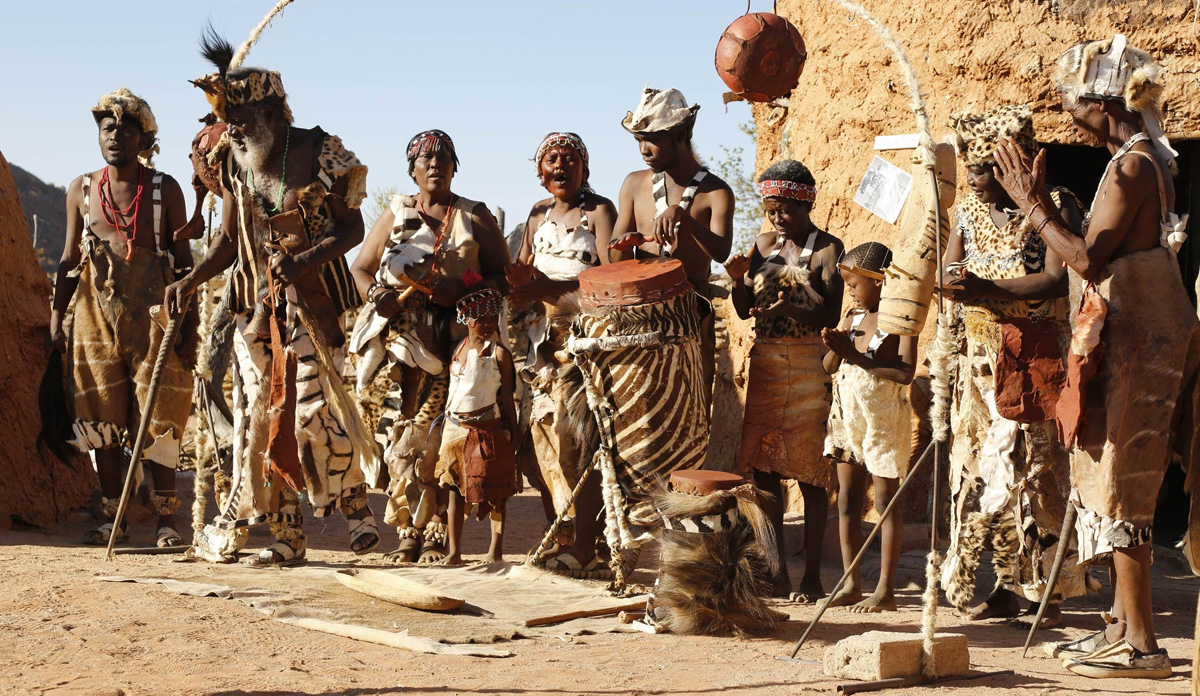
Namibia is home to many diverse ethnic groups, each with its own unique culture and traditions. Here are some of the Best Time to Visit Namibia according to cultural experiences:
Himba Cultural Festival:
The Himba Cultural Festival takes place in September each year in the Kunene region. This is an opportunity to experience the unique culture of the Himba people, including their traditional dress, music, and dance.
Owambo Cultural Festival:
The Owambo Cultural Festival takes place in August each year in northern Namibia. This is an opportunity to experience the traditional music, dance, and food of the Owambo people.
Damara Cultural Festival:
The Damara Cultural Festival takes place in August each year in the Twyfelfontein area. This is an opportunity to experience the traditional music, dance, and handicrafts of the Damara people.
Bushmen Cultural Experience:
The Bushmen are one of the oldest indigenous groups in Namibia, and there are several opportunities to experience their culture, including at the Nyae Nyae Conservancy and the Ju/’hoansi-San Living Museum.
Windhoek Karneval:
The Windhoek Karneval takes place in late April or early May each year in the capital city of Windhoek. This is a celebration of Namibian culture, including music, dance, food, and traditional costumes.
Tsumeb Cultural Festival:
The Tsumeb Cultural Festival takes place in April each year in the town of Tsumeb. This festival showcases the traditions, music, and dance of the Ovambo, Herero, Damara, and San people.
Caprivi Arts And Cultural Festival:
The Caprivi Arts and Cultural Festival takes place in August each year in the town of Katima Mulilo. This festival celebrates the traditional music, dance, and handicrafts of the Caprivi people.
Marula Festival:
The Marula Festival takes place in May each year in the northern regions of Namibia. This festival celebrates the Marula fruit, which is used to make beer, oil, and other products. The festival includes traditional music, dance, and food.
Nama Cultural Festival:
The Nama Cultural Festival takes place in September each year in the southern regions of Namibia. This festival celebrates the traditions, music, and dance of the Nama people.
Cultural Villages:
There are several cultural villages throughout Namibia where you can experience traditional lifestyles, music, and dance. These include the Damara Living Museum, the Mbunza Living Museum, and the Ovahimba Living Museum.
Overall, Namibia's cultural experiences are diverse and unique, and there are many opportunities throughout the year to learn about the country's rich cultural heritage. It's important to research the different cultural events and festivals, as well as the various cultural villages, before planning your Namibia Tour.
Best Time To Visit For Budget Travellers
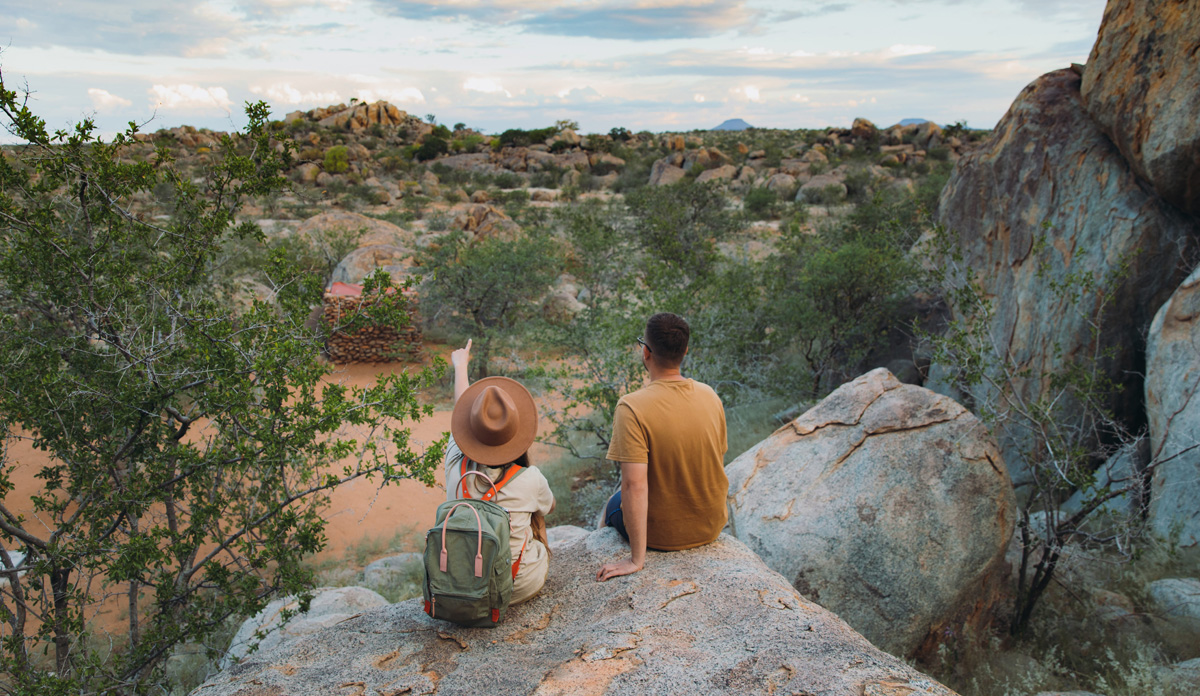
If you’re planning a Namibia Tours & Safaris with limited budget the best time would be April and November. During this time, you will get better deals on the hotels and lodges as very few people are there after the peak summer months.
And, in November, you can spot many migratory bird species.
The Overall Best Time To Visit Namibia
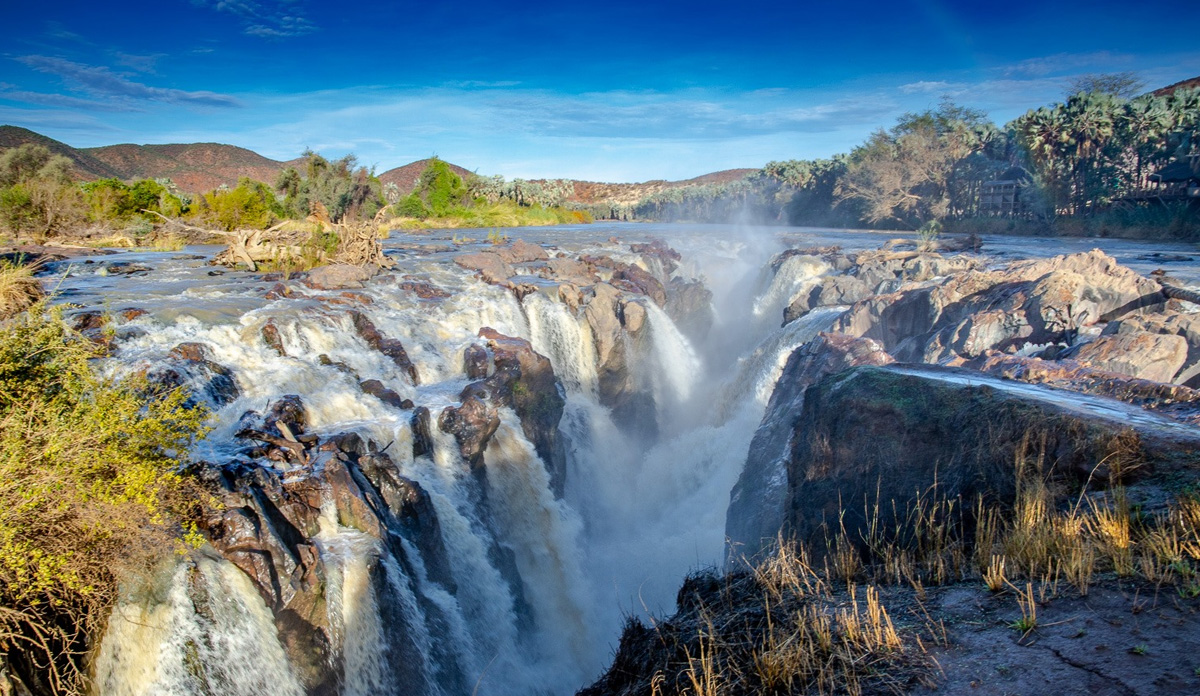
May to October is the overall Best Time to Travel to Namibia. Clear blue skies and mild temperature make the Namibia Safari experiences incredible. The less rainfall makes water resources dry, which makes large sums of animals congregate around the remaining water holes.
And more importantly, the environments dry out, due to less rain, making the game-viewing visibility better.
Things To Consider Before Planning A Namibia Tour
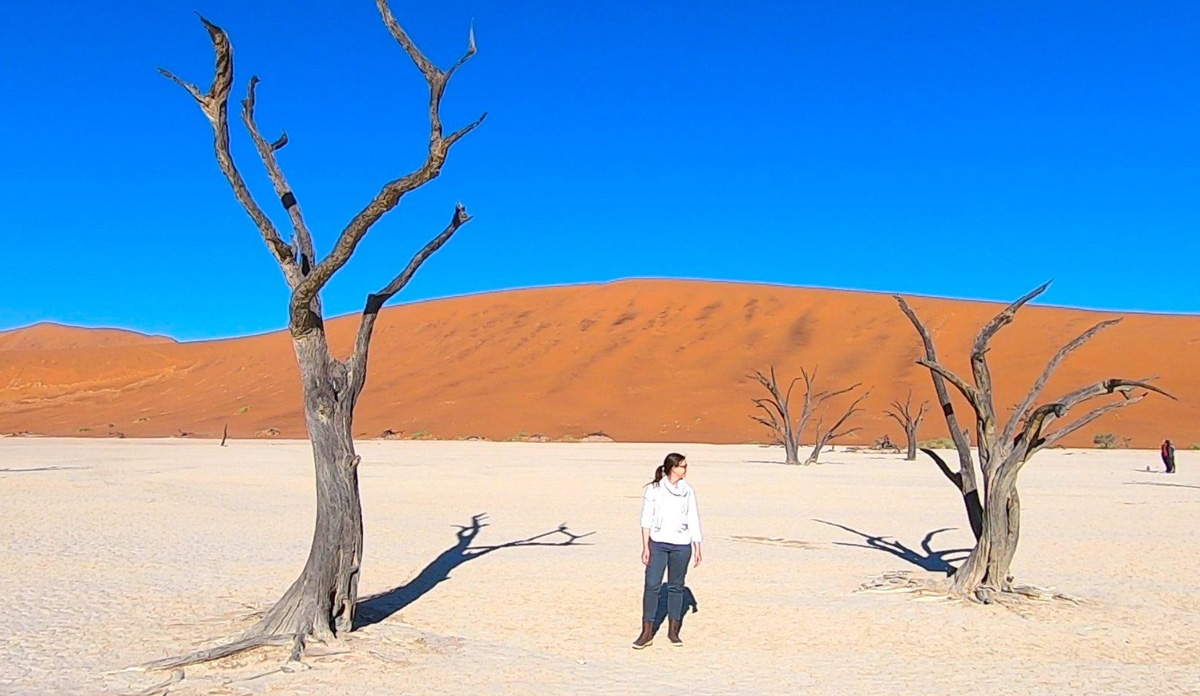
In the above information you must have got idea about which is time is perfect for you to plan your next Holidays In Namibia. But following are some important things you need to consider before start packing your bag.
Visa Requirements:
Depending on your country of origin, you may need a visa to enter Namibia. Check with the Namibian embassy or consulate in your home country to determine if you need a visa.
Vaccinations:
Make sure you are up-to-date on all routine vaccinations, including measles, mumps, rubella, and chickenpox. You may also need additional vaccinations, such as hepatitis A and B, typhoid, yellow fever, and rabies, depending on your travel plans and activities. Consult with your doctor or travel clinic for more information.
Travel Insurance:
It is highly recommended that you purchase comprehensive travel insurance before Traveling To Namibia to cover unexpected events, such as medical emergencies, trip cancellation, and theft or loss of belongings.
Climate and Weather:
Namibia is mostly arid, with hot days and cool nights. It is important to pack appropriate clothing and gear for the weather conditions, including sun protection, warm layers for nighttime, and sturdy shoes for Nambia Outdoor Activities.
Transportation:
Namibia is a large country with vast distances between destinations. You will need to consider transportation options, such as renting a car, hiring a driver, or taking public transportation.
Currency:
The Namibian Dollar is the official currency of Namibia, but South African Rand is also accepted. Make sure you have enough cash on hand for your trip, and consider using credit cards for larger purchases.
Language:
English is the official language of Namibia, but other languages, such as Afrikaans and German, are also commonly spoken.
Culture and Customs:
Namibia has a rich and diverse cultural heritage, and it is important to be respectful of local customs and traditions. It is also important to be aware of any potential safety risks, such as crime or wildlife encounters.
Outdoor Activities:
Namibia is known for its stunning natural beauty and outdoor activities, such as hiking, wildlife viewing, and desert excursions. Make sure you are prepared for these activities and have appropriate gear and supplies. But you have any gear with you, you can rent it in Namibia.
Health Risks:
It has a low risk of malaria, but it is still important to take preventative Namibia measures, such as taking anti-malaria medication, using insect repellent.
Final Thoughts
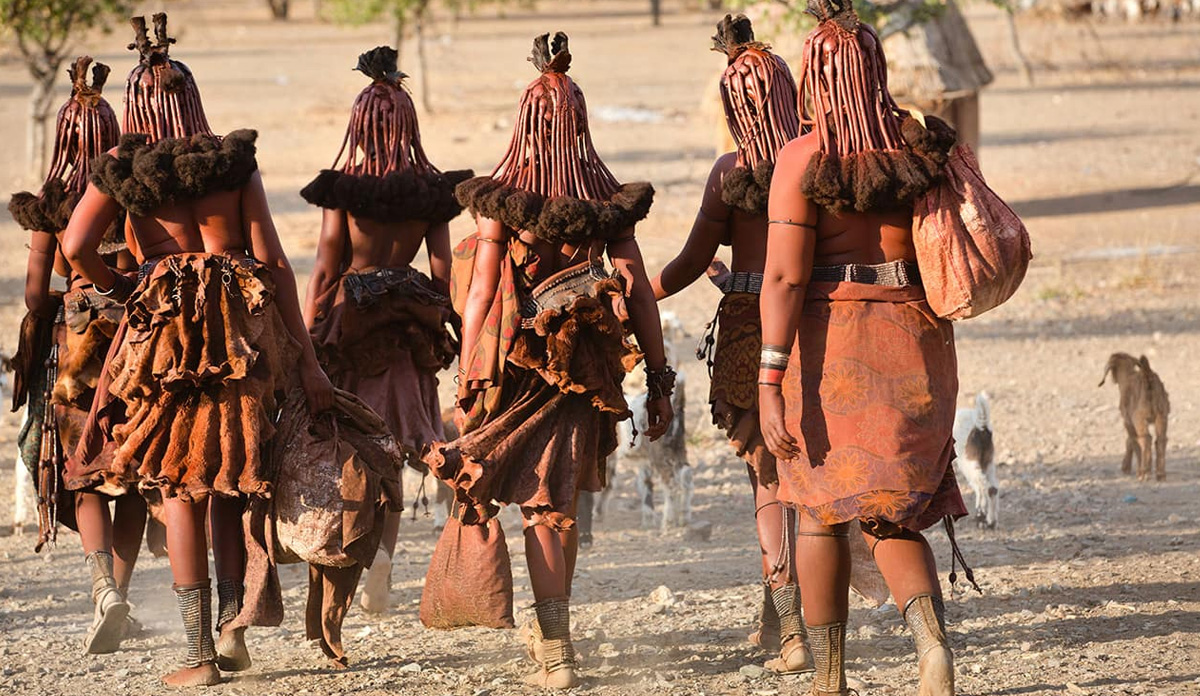
In conclusion, the Best Time To Travel To Namibia depends on your interests and activities. The dry season from June to October is ideal for wildlife viewing and outdoor activities, while the wet season from November to April offers stunning landscapes and birdwatching opportunities.
But the real essence is, no matter whether you are going for Namibia Safaris, you will experience something extraordinary.
Namibia
Best Time To Visit
Climate And Weather Patterns In Namibia
Months by Month Guide for Namibia Safaris
High Season vs Low Season in Namibia
The Best Time for Wildlife watching
Best time for outdoor activities
Best Time to Visit according to Destination
Best Time for Cultural experiences
Best Time to Visit for budget travellers
The overall Best Time to Visit Namibia
Things to consider before planning
Final thoughts
Related Namibia Travel Guide
We Think You’ll Love
Faqs On Best Time To Visit Namibia
We Think You’ll Love
The Best Time To Visit Namibia for wildlife viewing is during the dry season from June to October. During this time, the animals congregate around waterholes, making them easier to spot. Etosha National Park is especially good for wildlife viewing during this time.
The Best Time To Visit Namibia for photography is during the dry season from May to October. The clear skies and long hours of sunlight make for great photo opportunities, and the landscapes are at their most dramatic during this time.
The Best Time To Visit Namibia for hiking is during the cooler months from May to September. Temperatures are more comfortable for hiking during this time, and the trails are less crowded.
May to September, the cooler months are the best time of the year for desert activities like sandboarding and quad biking.
The Best Time To Visit Namibia for birdwatching is during the wet season from November to April. This is when migratory birds are present in the country, and the wetlands are at their most productive.
Cultural experiences can be enjoyed in Namibia year-round, but it is best to avoid the peak tourist season from July to August. The best time to visit is during the cooler months from May to September, when it is easier to interact with the local communities and learn about their traditions.
Road travel can be more challenging during the rainy season, especially in the northern regions of the country. It is important to check road conditions before embarking on a journey and to travel with a 4x4 vehicle if possible. However, Namibia is generally safe to travel to year-round.
The Best Time To Visit Namibia for beach activities is during the warmer months from November to March. The Atlantic coast can be quite chilly during the rest of the year, but during this time, temperatures are more pleasant for swimming and sunbathing.
Namibia has some of the clearest skies in the world, making it an ideal destination for stargazing. The best time to visit for stargazing is during the dry season from May to October when there is less cloud cover and the skies are clearer.
The Best Time To Visit Namibia for a self-drive safari is during the cooler months from May to September. The roads are in better condition, and the temperatures are more comfortable for driving during this time.
Hot air balloon rides are offered year-round in Namibia, but it is best to take a ride during the cooler months from May to September when the temperatures are more comfortable and the skies are clearer.
May to October is the high season in Namibia, and considered as the Best Time to visit Namibia. Usually, the sky remains clouds free during these months and the temperature remains pleasant.
May to October, the dry season is perfect for a Namibia Safaris. The least rain in the dry season lures the animals to water holes, which makes it easy to spot them.
April/May and September to October is the shoulder season in Namibia. In shoulder season, the accommodation prices remain low and the landscapes are filled with greenery and diverse wildlife.
Yes, December is an excellent month for a Safari In Namibia, especially in Etosha National Park, where you can spot a variety of species and other wild animals.
We are thrilled to help you plan your perfect safari holiday
We'd be delighted to help you with any questions you have about properties & safaris. Please fill in the form below so that we can help you create your perfect safari holiday.
Or
Contact Us
Feel free to give us a call or send us an e-mail:
Start Planning Your Tailored African Safari

Expert Safari Knowledge
With decades of expertise, we're your trusted safari guides, ensuring every moment exceeds your expectations.

Tailor-made African Safaris
Tailored to your preferences, our African Safaris guarantee an adventure perfectly suited to your desires.

Long-term Relationships
Our enduring partnerships across Africa provide exclusive access and authentic experiences.

Carefree Travel
Leave your worries behind and accept carefree travel with Falcon Safaris, where every detail is handled to perfection.
Our Travelers Say
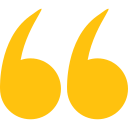
We travelled with Falcon Safaris in Zimbabwe and Botswana for 16 days. Falcon designed a wonderful trip with private guide to the most interesting sites in both countries. The organization of the whole trip was excellent, flights within the country, accommodation and activites. The guides were very knowledgable and told us a lot about the countries, their history, people, economy and much more. We visited the Great Zimbabwe Ruins, the Victoria Falls Tour and a number of national parks in both countries.
Rhino tracking was a real adventure! We had tremendous further game drives and saw very many animals - we did the Big Five. We had much more Victoria Falls Activities than planned and enjoyed very much.We strongly recommend Falcon Safaris to everyone planning a trip to Southern Africa and East Africa.
Wonderful trip to Zimbabwe and Botswana with excellent organization and very competent guides

Our Consultant Vimbai was very helpful and accommodating. We stayed at the Elephant hills hotel which was nothing short of amazing.Our activities included a helicopter flight, dinner cruise as well as a morning game drive. All the activities were absolutely amazing.
Exceptional!

We worked with Gertrude to schedule and organize everything and she did an excellent job. I asked a lot of questions via e-mail and she answered everyone in a timely helpful manner. Our guide at Victoria Falls was also great. He met us at the airport, provided a thoughtful tour of the Falls and got us to our next guide in Botswana. Our lodgings at River View Lodge were just as described- very comfortable and excellent food. All the staff were so pleasant and helpful. If I had to do it again I would arrange a morning boat ride as well. We only did the sunset boat rides and they were the high point of our entire trip- we saw so many animals and our guide was very knowledgeable. Just a great experience. Our lodgings at Oddball's Enclave was rustic and we loved it. So great to disconnect from the world for a bit. Leo, our guide, was the best - got us out and about, saw fantastic wildlife and got back to camp safely each time. Doc manages the camp so well. This whole trip was planned and organized by Falcon Safaris and we could not have been happier.
Fabulous, well planned trip

Falcon safaris have given my the correct advice with excellent service. The only suggestion will be to work closer with the lodges to confirm bookings as soon as possible. We have booked and pay our deposit a year in advance. We have only receive our final convermation from Chobe Safari lodge a week before departure. I do realize its not within your controle but with limit alternatives and a group of 14 people it becomes an issue to find alternative accomodation if the booking was cancelled.
Excellent and efficient service
Explore Our Africa With Customize Your Tour
We love Africa's diversity and create amazing trips for you. With 30+ years of experience, we customize every trip just for you.

